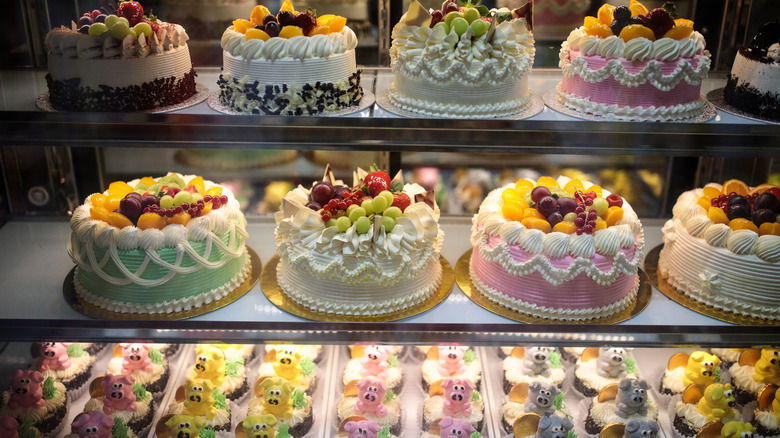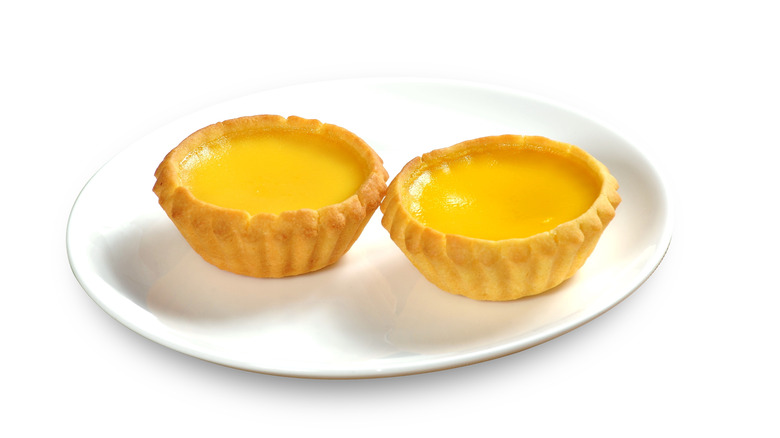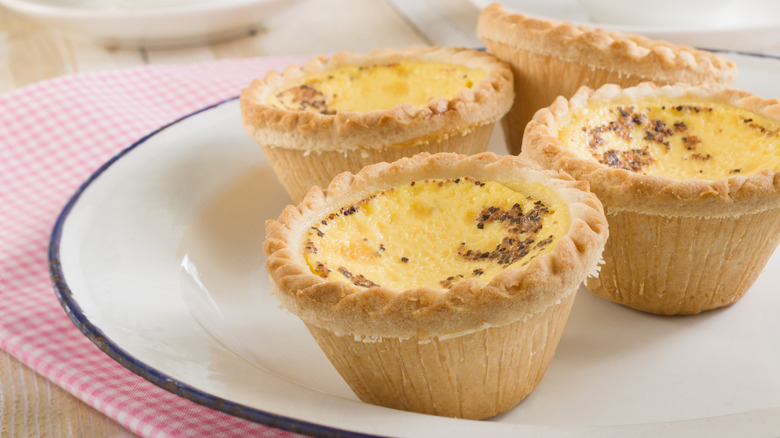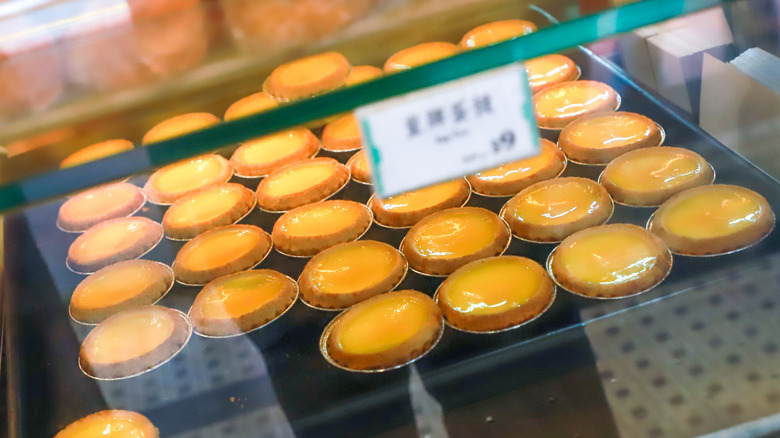Daan Tat: The Egg Tart That's A Chinese Bakery Standard
Entering a Chinese bakery for the first time, for the uninitiated, is an overwhelmingly thrilling experience for the senses. Behind the glass display cases, one won't find croissants or pain au chocolat like in a French boulangerie, nor the pizzelle or biscotti cookies of an Italian bakery. Instead, at a Chinese bakery, one can find a dazzling array of goods: sweet pineapple buns, mooncakes, coconut cream buns, fried sesame balls with red bean paste filling, milk tea, alongside savory baked goods like hot dog buns, pork floss buns, and barbeque pork buns (the kind you'd also find at a dim sum restaurant).
But there is one Chinese bakery standard, according to professional cook and writer Tim Chin, with which to judge whether the bakery is worth its salt: daan tat, a Hong Kong-style egg tart. It's a tiny treat that fits in the palm of your hand that delivers a satisfying texture combination of flaky pastry and custardy filling.
The origin of daan tat
A daan tat is a small, round tart with a flaky dough encasing and a silky, sweet egg custard filling. Daan tat looks similar to the Portuguese egg tart, pastel de nata, which allegedly was first created by 18th-century monks of Belem who found themselves having to sell sweet pastries to survive after the monasteries shut down following the 1820 liberal revolution (per Pasteis de Belem). However, the daan tat does not originate from the Portuguese treat (though the pastel de nata may have spawned the Macau-style egg tart), and instead is its own unique creation with an entirely different origin story.
A century later in Guangzhou, in the 1920s, the daan tat may have been born from the many British businessmen and officials who frequented the southern port city, along with British bakers who made British egg custard tarts, per Serious Eats. Chinese bakers made their own interpretation, and then post World War II, the daan tat migrated to Hong Kong with the wealthy Cantonese. There the pastry evolved to its popular and perfected form today.
The Cantonese egg tart versus the British egg tart
British egg custard tarts traditionally were made with shortcrust pastry and a filling made of cream, eggs, and sugar, as well as parsley, dates, prunes, and bone marrow, according to The Cambridge Language Collective. It wasn't until the 17th century, when temperatures in the Northern Hemisphere lowered, that the custard was added to make the tart a comfort food.
When the Chinese chefs saw the British chefs making their egg tarts, they copied the recipe. However, custard was a foreign, unfamiliar product that was expensive and hard to come by, so they replaced it with only egg, sugar, and milk. Instead of the shortcrust pastry, they used puff pastry custom to Cantonese dim sum, made with inexpensive pork lard rather than butter, though in later years they developed their own style of shortcrust. The lard is what gives the Cantonese-style egg tart its unique taste and flaky nature.
Daan tat ingredients and how to make them
While a good daan tat from a solid Chinese bakery is always a treat, there's nothing that beats eating a Chinese egg tart straight out of the oven. And for the freshest, warmest egg tart possible, it's best to bake the daan tat right in your own oven. The ingredients are relatively simple; one just needs flour, salt, unsalted butter, cold water, granulated sugar, hot water, evaporated milk, eggs, and vanilla extract, per The Woks of Life. After making the dough, which is best to do the day before so it can rest in the refrigerator overnight, the key to making a smooth filling is to strain out any bubbles that form as a result of whisking. For the most aesthetic result, use a fluted cutter to make the traditional ridged edge around the crust.
Visual learners can go to Youtuber Room for Dessert's channel for a soothing, easy-to-follow video tutorial for this simple Hong Kong-style egg tart recipe. They recommend eating these egg tarts for breakfast, paired with a milk tea — or you could even try it with yuenyeung, the drink that gives you coffee and tea in one cup.



